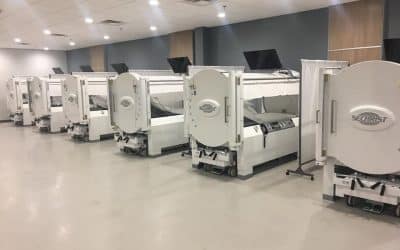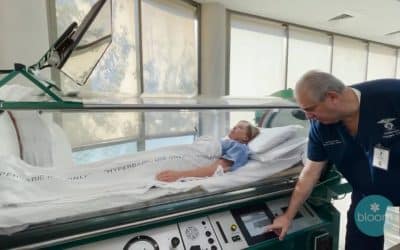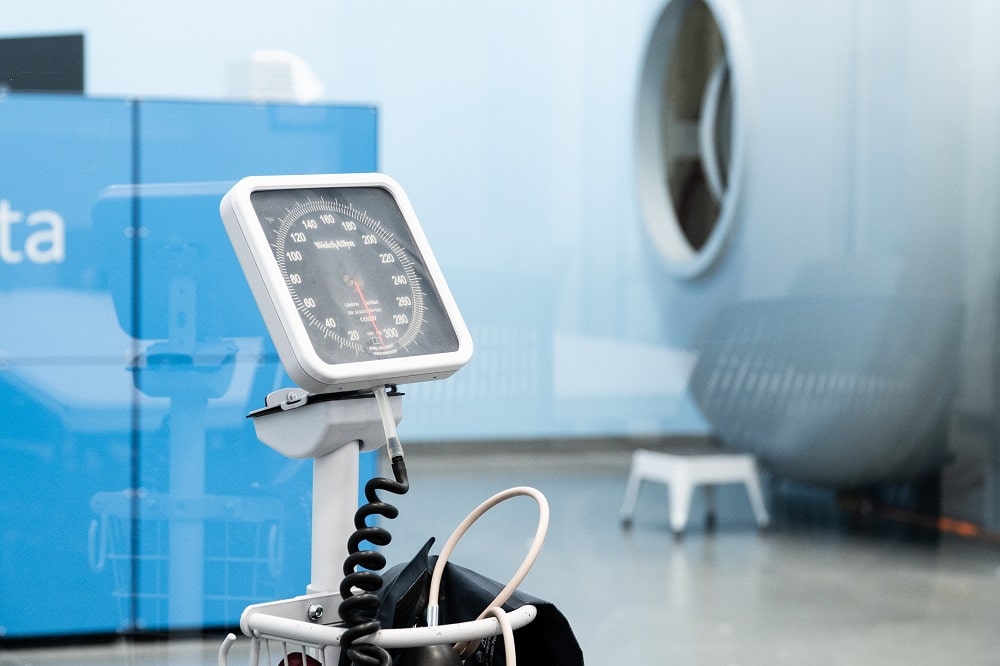Complementary and alternative medicine (CAM) is used by one-half to three-fourths of patients with multiple sclerosis (MS). Despite this widespread use, CAM may not be discussed in the course of a conventional medical visit. When considered in the context of MS, CAM therapies have a wide range of risk-benefit profiles. Some CAM therapies, such as acupuncture, cranberry, vitamin D, tai chi, and yoga, are low risk and possibly beneficial. Other CAM therapies, such as immune-stimulating supplements, bee venom, and hyperbaric oxygen, are ineffective, dangerous, or unstudied. Providing access to information about the risks and benefits of CAM therapies may increase the quality of care that is provided to patients with MS.
Multiple Sclerosis
Explore the latest research on the use of Hyperbaric Oxygen Therapy (HBOT) to treat Multiple Sclerosis. Extivita maintains an extensive publication database for Multiple Sclerosis and various other indications with therapies such as Hyperbaric Oxygen Therapy, Neurofeedback, Nutritional IV Therapy, Infrared Sauna, and Pulsed Electromagnetic Field Therapy. Explore our database on Acne and Hyperbaric Oxygen Therapy aka, HBOT, below.
For a complete list of indications treated at Extivita, explore the conditions we treat.
Hyperbaric oxygen in multiple sclerosis.
Abstract: Perrins (1987). Hyperbaric oxygen in multiple sclerosis. Journal of the Royal Society of Medicine, 1987 Apr;80(4):260. https://www.ncbi.nlm.nih.gov/pubmed/20894650
Mechanism of lysine oxidation in human lens crystallins during aging and in diabetes.
Oxidative mechanisms during nuclear sclerosis of the lens are poorly understood, in particular metal-catalyzed oxidation. The lysyl oxidation product adipic semialdehyde (allysine, ALL) and its oxidized end-product 2-aminoadipic acid (2-AAA) were determined as a function of age and presence of diabetes. Surprisingly, whereas both ALL and 2-AAA increased with age and strongly correlated with cataract grade and protein absorbance at 350 nm, only ALL formation but not 2-AAA was increased by diabetes. To clarify the mechanism of oxidation, rabbit lenses were treated with hyperbaric oxygen (HBO) for 48 h, and proteins were analyzed by gas and liquid chromatography mass spectrometry for ALL, 2-AAA, and multiple glycation products. Upon exposure to HBO, rabbit lenses were swollen, and nuclei were yellow. Protein-bound ALL increased 8-fold in the nuclear protein fractions versus controls. A dramatic increase in methyl-glyoxal hydroimidazolone and carboxyethyl-lysine but no increase of 2-AAA occurred, suggesting more drastic conditions are needed to oxidize ALL into 2-AAA. Indeed the latter formed only upon depletion of glutathione and was catalyzed by H(2)O(2).
Effect of BEMER magnetic field therapy on the level of fatigue in patients with multiple sclerosis: a randomized, double-blind controlled trial
Abstract Objectives: Electromagnetic field therapy has been reported to be beneficial in patients with multiple sclerosis (MS) with significant fatigue. This study was designed to evaluate the long-term effects of Bio-Electro-Magnetic-Energy-Regulation (BEMER) on...
Hyperbaric oxygenation in fluid microembolism.
Because clinicians require objectively demonstrable neurological deficits to confirm a diagnosis, the recognition of embolic events in the nervous system is generally restricted to the effects of ischemic necrosis produced by arterial occlusion. However, magnetic resonance imaging (MRI) has shown that lesser degrees of damage associated with small emboli are common, especially in the mid brain, and are usually clinically silent. They are frequently associated with atheromatous embolism in the elderly, but microembolic debris, such as fat, is common in the systemic venous return of healthy people and generally trapped in the microcirculation of the lung being removed by phagocytosis. However, pulmonary filtration may fail and microemboli may also pass through an atrial septal defect in so-called ‘paradoxical’ embolism. Studies of bubbles formed on decompression in diving have demonstrated the importance of pulmonary filtration in the protection of the nervous system and that filtration is size dependant, as small bubbles may escape entrapment. Fluid and even small solid emboli, arresting in or passing through the cerebral circulation, do not cause infarction, but disturb the blood-brain barrier inducing what has been termed the ‘perivenous syndrome’.
Alternative and complementary therapies in multiple sclerosis.
Most MS patients use unconventional therapies, usually as complementary measures in addition to the conventional treatment. Only a few adequate clinical trials exist in this field. By definition, the efficacy of these therapies is unproven. Moreover, the possible risks are also largely unknown. Some therapies rely on rational pathophysiological considerations, other must be regarded as potentially harmful. The influence of diet on MS is unproven. Possibly, unsaturated fatty acids are beneficial. However, a few randomized trials yielded inconclusive results. Long-term supplementation of Vitamin D is associated with a decreased MS incidence. There is, however, insufficient evidence for an influence of Vitamin D on the course of the disease. Because of the high prevalence of osteoporosis in MS patients, prophylaxis with Vitamin D and Calcium is widely accepted. The effects of various minerals, selenium, antioxidant compounds, fish oil or vitamins remain speculative.
Depression in multiple sclerosis: A review
Abstract Several studies have reported high rates of depression in multiple sclerosis (MS) with a lifetime prevalence of approximately 50% and an annual prevalence of 20% not uncommon. Concern about the potential of new drug treatments to exacerbate or precipitate...
Long-term hyperbaric oxygenation retards progression in multiple sclerosis patients
Objective: To evaluate the effect of prolonged courses of hyperbaric oxygen treatment (HBO2T) on the progressive deterioration of multiple sclerosis (MS) patients. Design: Prospective study of the disability of 703 MS patients first treated five or more years previ-...
Hyperbaric oxygen therapy for multiple sclerosis.
Abstract: Multiple Sclerosis (MS) is a chronic, recurrent and progressive illness with no cure. On the basis of speculative pathophysiology, it has been suggested that Hyperbaric Oxygen Therapy (HBOT) may slow or reverse the progress of the disease. The object of this...









